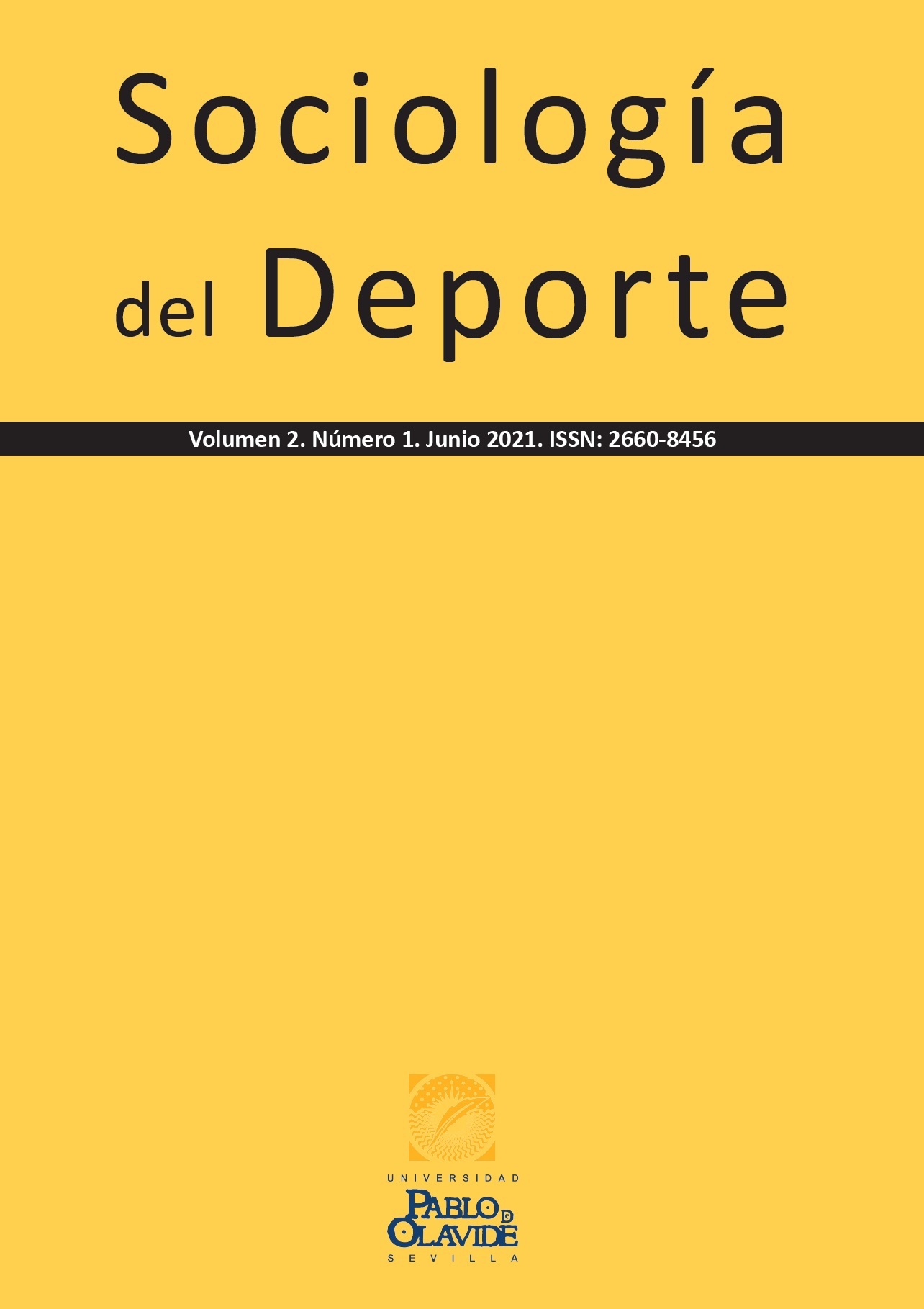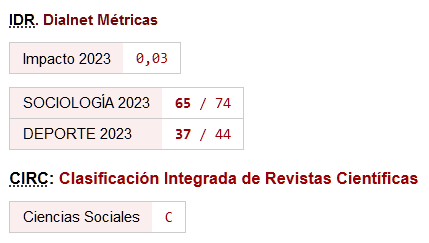Exploring hinking experiences in Northern Italy: organization, socialization, and unstated rules
DOI:
https://doi.org/10.46661/socioldeporte.5573Keywords:
Hiking, Lifestlye, Socialization, LeisureAbstract
Hiking is often studied for its physical and mental health benefits. Yet little research describes the actual practice of hiking itself as a social activity. Based on a qualitative approach, with in-depth interviews conducted with 7 subjects in Northern Italy during 2019-2020, this study aims to explore how hiking is performed, in terms of its organizational and social dynamics, as well as the shared visions around this practice. The result shows that hiking has specific ways of being performed materially and socially, and that these ways of performing hiking are maintained and reproduced through subjective norms about how hiking should be performed.
Downloads
References
Ajzen, Icek. 1991. “The theory of planned behavior.” Organizational behavior and human decision processes 50(2), 179-211.
Ajzen, Icek, and Driver, B. L. 1991. “Prediction of leisure participation from behavioral, normative, and control beliefs: An application of the theory of planned behavior.” Leisure Sciences 13(3), 185-204.
Beard, Jacob G., and Ragheb, Mounir G. 1983. “Measuring leisure motivation.” Journal of leisure research 15(3), 219-228.
Brown, David. 2009. The big drum: The mutability of a sporting habitus: Mountaineering in Scotland as a case study. International Review for the Sociology of Sport 44(4), 315-330.
Burch, William R. 1969. “Social circles of leisure: competing explanations.” Journal of Leisure Research 1, 125–147.
Coble, Theresa, G., Selin, Steven, and Erickson, Beth B. 2003. “Hiking Alone: Understanding Fear, Negotiation Strategies and Leisure Experience.” Journal of Leisure Research 35(1), 1-22.
Collins-Kreiner, Noga, and Kliot, Nurit. 2016. “Particularism vs. universalism in hiking tourism.” Annals of Tourism Research 56(3), 132-137.
Delaney, Tim, and Tim Madigan. 2009. Sports: Why People Love Them! Lanham, Md: University Press of America.
Donnelly, Peter, and Young, Kevin. 1988. The construction and confirmation of identity in sport subcultures. Sociology of sport journal 5(3), 223-240.
Zeijl, Elke, Yolanda te Poel, Manuela du Bois-Reymond, Janita Ravesloot, Jacqueline J Meulman. 2000. “The Role of Parents and Peers in the Leisure Activities of Young Adolescents”. Journal of Leisure Research 32(3), 281-302.
Fondren, Kristi M. 2016. Walking on the Wild Side: Long-Distance Hiking on the Appalachian Trail. New Brunswick, NJ: Rutgers University Press.
Gee, James P. 1999. An Introduction to Discourse Analysis: Theory and Method (1st ed.). New York, NY: Routledge.
Giddens, Anthony. 1991. Modernity and self-identity: Self and society in the late modern age. Stanford: Stanford University Press.
Hochschild, Arlie Russell. 1979. "Emotion Work, Feeling Rules, and Social Structure." American Journal of Sociology 85(3), 551-75.
Iso-Ahola, Sepo E. 1983. “Towards a social psychology of recreational travel.” Leisure Studies 2(1), 45-56.
Kyle, Gerard, and Chick, Gary. 2004. “Enduring leisure involvement: the importance of personal relationships.” Leisure Studies 23(3), 243-266.
Kyle, Gerard, Alan Graefe, and Robert Manning, 2004. “Attached recreationists... Who are they?” Journal of Park and Recreation Administration 22(2), 65-84.
Parker, Stanley. 1975. “The sociology of leisure: progress and problems.” The British Journal of Sociology 26(1), 91-101.
Stebbins, Robert A. 1982. “Serious leisure: A conceptual statement.” Pacific sociological review 25(2), 251-272.
Svarstad, Hanne. 2010. “Why hiking? Rationality and reflexivity within three categories of meaning construction.” Journal of Leisure Research 42(1), 91-110.
Williams, Daniel R. 2002. “Leisure identities, globalization, and the politics of place.” Journal of Leisure Research 34(4), 351-367.

Downloads
Published
How to Cite
Issue
Section
License
Copyright (c) 2021 Jardel Sestrem, Michael Zaslavsky

This work is licensed under a Creative Commons Attribution-NonCommercial-ShareAlike 4.0 International License.








